_______________
Additional Photos
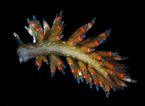
underside
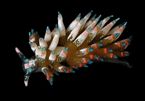
top

side

front
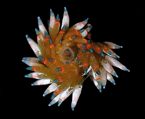
defensive posture?
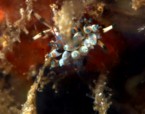
on
hydroid
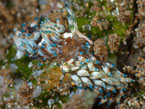
mating
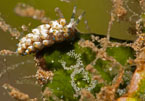
with egg masses
_______________
GALLERY

|
Eubranchus sp. #6
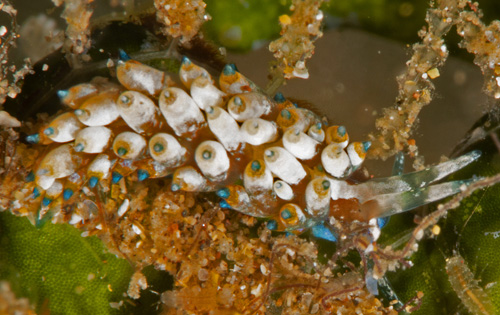
Maximum size: 6 mm.
Identification:
The
body
of this animal is translucent-orange with opaque white on the
top of the head
and along the dorsal midline. The cerata are translucent-orange and the
inner 2 or 3 in each group have opaque opalescent-white pigment on
their distal two thirds. There is a small orange patch on the anterior
face of each
white ceras and the cerata are tipped with teal blue. The
cephalic tentacles are translucent-blue with white opalescent flecks
and
bright blue bases. The
rhinophores are white at the bases and tipped with blue. In some
animals, they have a medial, bluish-black band.
Natural history:
Eubranchus sp. #6
is a moderately rare species found in moderately protected to highly
exposed rocky
areas and in Halimeda kanaloana beds at depths of
4.5-32 m
(15-105 ft). It's found on the hydroid Sertularia that grows epibiotically on Halimedae
(Gosliner, et. al., 2018). A 4.5 mm animal laid two
white, spiral egg masses. The
largest was 3 mm in diameter with 1.5 whorls and a ribbon about 0.6 mm
wide. They hatched in about 2.5 days in the laboratory.
Distribution:
Big Island, Maui, Oahu, Kauai and French Frigate Shoals: widely distributed in the western & central
Pacific; also in
the eastern Pacific.
Taxonomic notes:
It was first
recorded
in Hawaii off Makena, Maui by PF on Apr. 21, 1991.
Photo: Kelly McCaffrey: Maalaea Bay, Maui; Nov. 2, 2021.
Observations and comments:
Note
1: ( )
|
|









